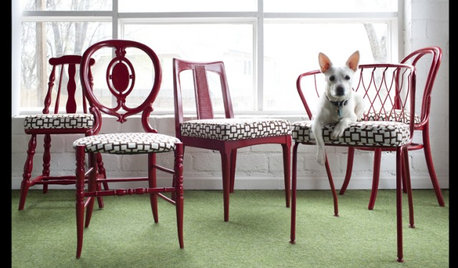repairing finish spotted with nail polish remover
linnea56 (zone 5b Chicago)
17 years ago
Featured Answer
Sort by:Oldest
Comments (24)
russmahogany
17 years agokmealy
17 years agoRelated Professionals
Town 'n' Country Cabinets & Cabinetry · Arnold Carpenters · American Fork Flooring Contractors · Lewis Center Flooring Contractors · Middleburg Flooring Contractors · Monroe Flooring Contractors · Orlando Flooring Contractors · Palm Valley Flooring Contractors · Pompano Beach Flooring Contractors · Reading Flooring Contractors · Surprise Flooring Contractors · Austin Furniture & Accessories · North Myrtle Beach Furniture & Accessories · Topeka Furniture & Accessories · La Mirada Furniture & Accessorieslinnea56 (zone 5b Chicago)
17 years agokmealy
17 years agorussmahogany
17 years agolinnea56 (zone 5b Chicago)
17 years agorussmahogany
17 years agolinnea56 (zone 5b Chicago)
17 years agolindac
17 years agorussmahogany
17 years agorussmahogany
17 years agolinnea56 (zone 5b Chicago)
17 years agokmealy
17 years agobrickeyee
17 years agolindac
17 years agolinnea56 (zone 5b Chicago)
17 years agorussmahogany
17 years agolindac
17 years agolinnea56 (zone 5b Chicago)
17 years agobrickeyee
17 years agodallas4eva
17 years agobrickeyee
17 years agorussmahogany
17 years ago
Related Stories

REMODELING GUIDESWood Floor Care: Polish Your Skills
Help your wood floors stay gorgeous by learning how to keep stains, dullness and warping at bay
Full Story
HOUSEKEEPINGOut, Darn Spot! Tips for Removing Carpet Stains
Know the right solutions and when to use them to prevent stains from pets, soda, chocolate, blood and more
Full Story
HOUSEKEEPINGHow to Remove Water Rings From Wood Tables
You may be surprised by some of these ideas for removing cloudy white water marks from wood surfaces
Full Story
BEDROOMS14 Steps to a Perfectly Polished Bedroom
Go from procrastination to gorgeous presentation with our bedroom decorating guide that covers all the details
Full Story
HOUSEKEEPINGHousekeeping 101: How to Clean Silver
Learn from a pro how to properly clean and care for your precious silverware
Full Story
REMODELING GUIDESFinish Your Remodel Right: 10 Tasks to Check Off
Nail down these key details to ensure that everything works properly and you’re all set for the future
Full Story
UPHOLSTERYSeeking a Quiet, Relaxed Spot? Try Upholstering Your Walls
Upholstery can envelop an entire room, a framed panel or a single wall. See some design options and learn what to expect
Full Story
FURNITURECreative Collector: Spot a Vintage-Furniture Steal
Finding vintage furniture is easy, but is the price right? Get the best chairs, tables and more for your money with these guidelines
Full Story
DINING ROOMSInside Houzz: Taking a Dining Space From Plain to Polished
By-the-hour design advice helps a homeowner define a dining area in an open floor plan and give it a decorator look
Full Story
FLOORSHow to Paint Your Hardwood Floors
Know how to apply nail polish? Then you can give your wooden floors a brand-new look
Full Story








russmahogany